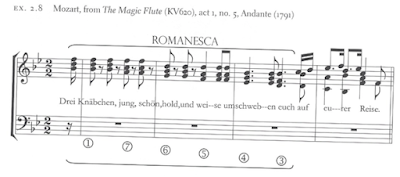Let's start in fine philosophical form by asking what kinds of things might be called "musical satisfaction." Here are the definitions of "satisfaction" from Dictionary.com:
Only nos. 1 to 4 seem to be relevant. Oddly, they immediately point to the fatal flaw of the progressive, modernist model of art: for them, art must always be challenging and uncomfortable, hence, never satisfying. Though I suppose that if you are used to constantly being challenged, that in itself might be satisfying. This is certainly a factor in what performers find satisfying. They would rather be challenged than bored, much of the time.1. an act of satisfying; fulfillment; gratification.2. the state of being satisfied; contentment.3. the cause or means of being satisfied.4. confident acceptance of something as satisfactory, dependable, true, etc.5. reparation or compensation, as for a wrong or injury.6. the opportunity to redress or right a wrong, as by a duel.7. payment or discharge, as of a debt or obligation.
Reflecting on my own experiences, I am satisfied with my own performance if it is accurate, well-paced and expressive. I suppose there is an extra level of satisfaction if the piece is challenging. As a listener and for audiences in general, I suspect that there is a fundamental difference. A piece might be challenging and the listener might enjoy the challenge, but even in that case there has to be what you might call a satisfactory summing-up. The ending, in particular, has to be satisfactory and not leave the listener lost or disappointed.
Perhaps the most crucial element for audiences is that there be something they can connect with. If every single aspect of the work is novel to the point of being disconcerting, then I can't see the audience feeling satisfied at the end. In all the definitions of satisfaction there is a thread of familiarity, implied by words such as contentment and fulfillment. The latter word especially implies that the listener had some sort of expectation that was not denied.
In recent years a couple of books have come out talking about how 18th century composers worked and the way they were trained. These books focus on the partimenti (singular: partimento) which were models of harmonic structures and involved the improvisation of melodies over a figured bass. This method of teaching was developed in 18th century Naples, but used formal structures from a long stretch of music history. The romanesca is a typical example. Wikipedia says it was used in the 16th to the early 17th centuries, but it was still part of partimento instruction much later. Here is a simple example:
 |
| Click to enlarge |
And here is how it might have been elaborated:
 |
| Click to enlarge |
The point is that composers up to and including Haydn, Mozart, Beethoven and likely Schubert as well, were taught by the partimento method which meant that they had certain fundamental harmonic patterns and phrase structures in their bones. Here is a romanesca pattern in Mozart's The Magic Flute:
These patterns, through long use, have a certain familiarity and satisfaction to them. If you look at the romancesca above you will notice that it contains a sequence, which is a melodic/harmonic cell that is repeated at different pitch levels, followed by a cadence. These are what you might call the foundation and pillars of 18th century music and as such, they provided a certain level of guaranteed satisfaction to the listener familiar with them. There is probably something similar going on today in pop music, which tends to rely on a similar limited set of patterns and textures.
The composer's job, therefore, was to ornament, decorate and vary these patterns in such a way as to intrigue the listener without either boring them or alienating them. The composer's job then, that is! Now, one suspects that rule one is to avoid any suggestion whatsoever that there is a familiar pattern anywhere in the music. For some composers that is. For other composers, they are trying to solve the problem by inventing new kinds of partimento, but so far it is a bit hit and miss.
(For a discussion of that aspect of modernism which perhaps underlies a lot of the alienation of composers and audiences, it is worthwhile looking at Bertolt Brecht's concept of "distancing" which you can read up on here.)
It ain't easy being a composer! But seeing how the 18th century masters were trained and worked, you can see why they were so awesomely productive: they had frameworks ready to hand that they could fill with inspired musical ideas. The composer of today faces a page that is rather formidably blank.
I have two envoi for this post. The first is the whole of the fifth number from act one of The Magic Flute excerpted above. The section quoted above comes right around the 4:25 mark in this clip:
And the second is, inevitably, "(I Can't Get No) Satisfaction" by the Rolling Stones:


No comments:
Post a Comment